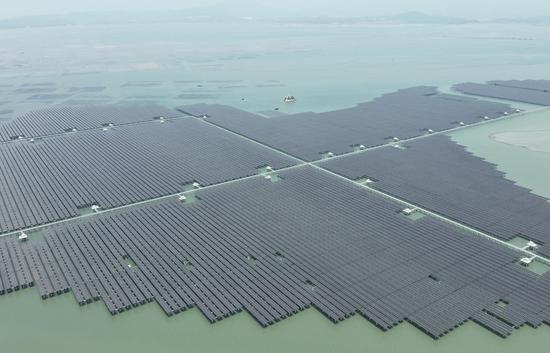An international research team led by the Chinese Academy of Sciences has uncovered striking evidence of seasonal temperature swings and glacial cyclic activity during the greenhouse period in Earth's past, offering new insights into today's climate challenges.
The study, published on Saturday in Science Advances, is the first to reconstruct the history of seasonal fluctuations in sea surface temperatures during a greenhouse Earth period, discovering that during the Early Cretaceous period (139.8-132.9 million years ago), the Earth exhibited significant seasonal temperature variations and periodic melting of polar ice sheets and glaciers.
The findings challenge long-held assumptions about stable, ice-free conditions during prehistoric warm eras, said Ding Lin, an academician from the Institute of Tibetan Plateau Research of CAS, who led the study.
In collaboration with institutions in Germany, the United Kingdom and Madagascar, Ding's team analyzed fossilized oyster shells from the Early Cretaceous period and found that the Earth exhibited significant seasonal temperature variations and periodic melting of polar ice sheets and glaciers.
By examining growth layers in the shells, similar to tree rings, the team reconstructed seasonal sea surface temperatures and identified periodic melting of polar glaciers, even in a world with high-atmospheric carbon dioxide concentration levels.
"Bivalve shells like these oysters are time capsules, bridging Earth's spheres and recording the dance between climate rhythms and ecosystems. They guide us to seek solutions for our future in deep-time lessons," said Ding, the paper's corresponding author.
The researchers focused on oysters of the genus Rastellum, whose shells form distinct light and dark bands corresponding to summer and winter growth. By scanning electron microscopy and geochemical analyses, the team extracted seasonal temperature data.
Climate modeling and clumped isotopes both revealed that winter temperatures in the Southern Hemisphere's mid-latitudes were 10 to 15 C lower than summers during a cooling phase known as the Weissert Event — comparable to modern seasonal swings, according to the research team.
Oxygen isotope fluctuations also hinted at seasonal glacial meltwater flows into the ocean, similar to today's Greenland ice sheet scenarios, Ding said.
"The Early Cretaceous greenhouse world was like a symphony, with warm main themes occasionally punctuated by short glacial notes," explained He Songlin, the study's first author.
The team linked brief glacial pulses to volcanic activity from the Parana-Etendeka eruptions and shifts in Earth's orbit.
Co-corresponding author Wang Tianyang said, "Even in today's warming climate, regional geological events combined with human actions could trigger unexpected cooling."
The study builds on the team's earlier work, estimating that the volume of Early Cretaceous polar ice reached half of Antarctica's ice sheets today (16.5 million square kilometers).
"This research cracks open a new window into Earth's climate past, revealing hidden rhythms beneath the greenhouse facade," said Andreas Mulch, a co-author from Germany's Senckenberg Biodiversity and Climate Research Centre.
The study, supported by the National Natural Science Foundation of China and CAS programs, underscores the urgency of understanding climate complexity to predict future extremes, Ding said.


















































 京公網安備 11010202009201號
京公網安備 11010202009201號